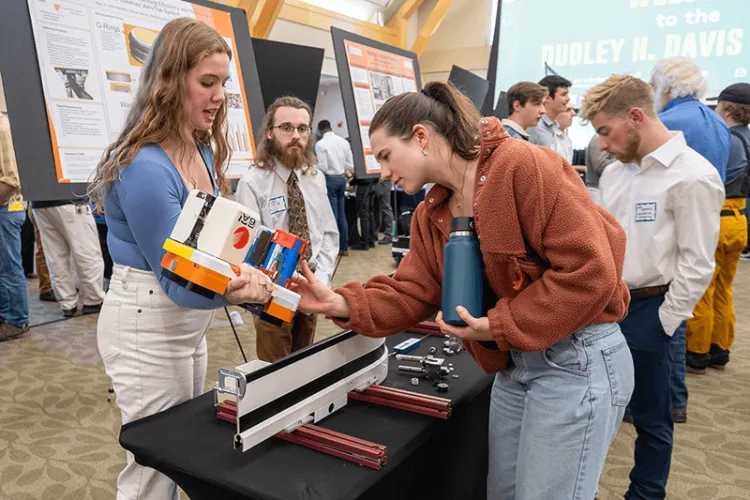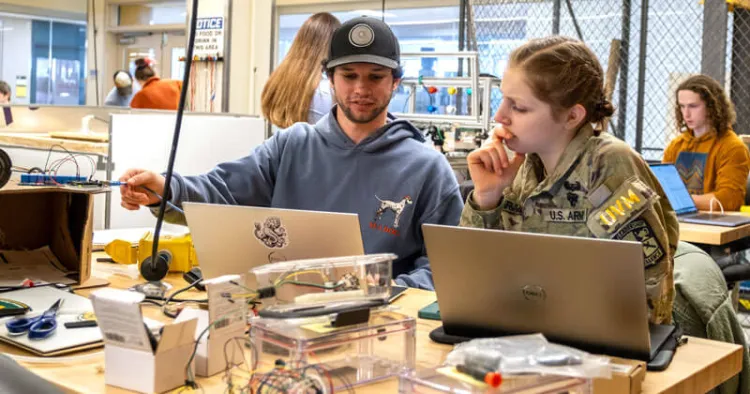These projects originate as problem statements submitted by local companies, individuals, non-profits, students, or UVM Faculty. The outcome for each project is unique as students investigate the client’s needs and create an engineering design that solves the client’s unique challenge.
Seniors in our Mechanical and Electrical Engineering programs will work on projects in the Senior Experience in Engineering Design (SEED) capstone course series.
Learn more about the Senior Experience in Engineering Design (SEED)
Seniors in our Civil Engineering and Environmental Engineering programs will work on projects in the Civil and Environmental Engineering (CEnvE) Senior Capstone Design course series.
Learn more about the Civil and Environmental Engineering (CEnvE) Senior Capstone Design
Engineering Design Night

Each spring, students in the Senior Experience in Engineering Design (SEED) and the Civil and Environmental Engineering (CEnvE) Senior Capstone Design courses share their projects during the annual Engineering Design Night — the culminating event for their work over the course of the past academic year.
Senior Experience in Engineering Design (SEED)

Seniors in Mechanical and Electrical Engineering programs work in teams to address complex and multidisciplinary problems. SEED projects originate as problem statements from companies, non-profits, faculty, or students. The projects are supported by the local engineering community and engineering faculty at UVM.
From a company's perspective, a SEED project offers the opportunity to work directly with senior engineering students, take a fresh look at a long-standing problem, or explore new ideas for their company. Students are eager to engage in engineering practice as preparation for work in industry and to apply the theory they have been learning in school. Course material related to design project fundamentals and the involvement of industry contacts add to the student’s education and strengthen links between industry and Engineering at UVM.
Learn more about the Senior Experience in Engineering Design (SEED) Program
Download SEED information package (PDF)
Civil and Environmental Engineering (CEnvE) Senior Capstone Design

Our Civil Engineering and Environmental Engineering graduates have a significant capstone senior design experience in their final year. Currently, it is an intense semester-long experience on projects submitted by local, state, and federal agencies, municipalities, non-profits, engineering design competitions, or UVM Staff and Faculty. Most projects are service-learning with community partners sharing their real-life experiences of sustainably meeting diverse community needs with limited resources. Students investigate the client’s needs and create an engineering design that best solves the client’s problem or unmet need, considering the constraints and resources affecting the solution’s sustainability.
A culminating, team-based design project
An example project where a Senior Experience in Engineering Design (SEED) team worked together to develop a solution for Burton, the pioneering Burlington-based snowboard company.